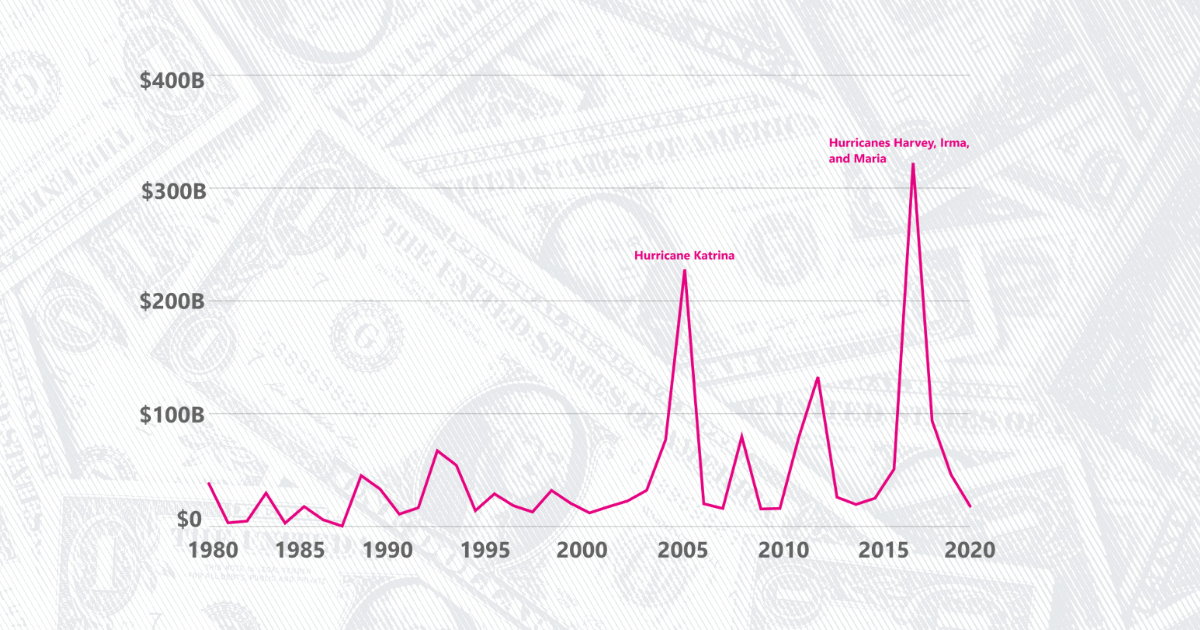Government
Natural disasters have cost the US over $1.79T since 1980

Environment & Energy
Environment & Energy
In 2020, the average global temperature was 0.98 °C (1.76 °F) above the 20th century average. It was also 0.02 °C (0.04 °F) below 2016, the warmest year on record.
Environment & Energy
The 2010s averaged twelve such disasters per year and the 2000s averaged six such disasters per year.
Environment & Energy
Wildfires burned an average of 7 million acres per year in the 2010s, more than twice the annual average in the 1990s. Final data on 2020 wildfires will be released in March 2021.
Environment & Energy
Coal production fell by 24%, whereas solar and wind energy grew 22% and 14%, respectively. Overall, fossil fuel production was up 32% in 2020 compared to 1980, largely due to a 74% increase in natural gas production. Nuclear energy production increased 201% since 1980 and renewable production increased 116%. Combined, renewable and nuclear energy comprised 21% of energy production in 2020.
Environment & Energy
Energy consumption related to transportation fell 15%, whereas consumption related to the commercial sector fell 7%.
Environment & Energy
Imported energy fell 42% from the high in 2006, while exports increased 396% over the same period.
Environment & Energy
Carbon dioxide is the largest source of US greenhouse gas, comprising 80% of 2019 emissions, followed by methane at 10%. In 2018, the US made up 15% of the world’s carbon dioxide emissions and emitted more metric tons of carbon dioxide (5.3 billion metric tons) than any country other than China (10.8 billion metric tons).
Explore the Environment & Energy Big Picture